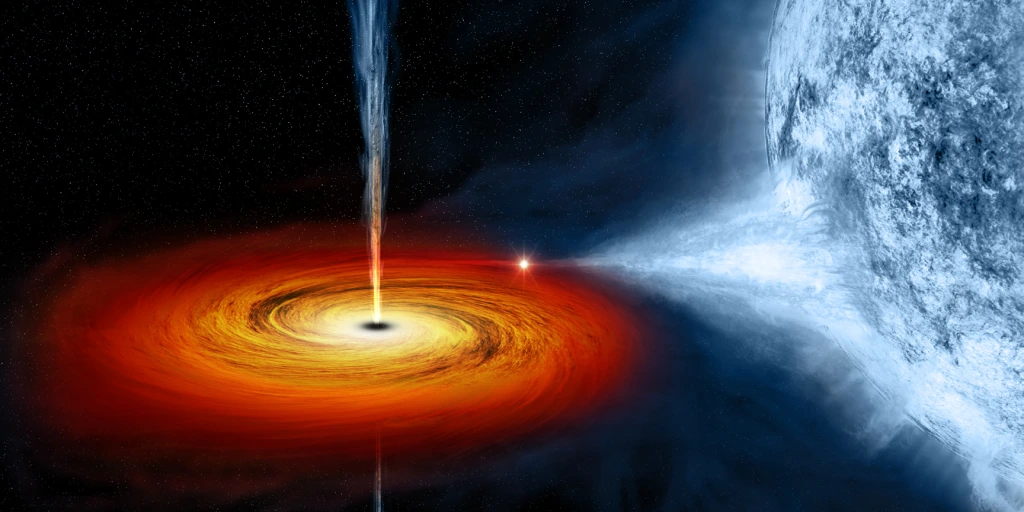Dark Matter: Unraveling the Invisible Mysteries of the Universe
Introduction
In the vastness of the cosmos, there exists a hidden enigma that continues to puzzle scientists and astronomers alike – Dark Matter. While it might sound like the stuff of science fiction, dark matter is a very real and essential component of our universe. In this article, we will embark on a journey to demystify this elusive substance in simple and easy-to-understand language.
What is Dark Matter?
Dark matter is an invisible and mysterious form of matter that neither emits nor interacts with light or any other form of electromagnetic radiation. Its presence is only inferred by its gravitational effects on visible matter and light. Although it remains undetectable through conventional means, it is believed to account for approximately 27% of the entire mass and energy content of the universe.
The Need for Dark Matter
The concept of dark matter emerged to explain the observed discrepancies between the calculations of the mass in the universe based on visible matter and the actual gravitational effects observed on galaxies and galaxy clusters. Without the existence of dark matter, the gravitational forces at play would not be sufficient to maintain the cohesiveness and stability of galaxies, stars, and other celestial structures.
Unraveling the Mystery
Despite intense research and observation, dark matter’s true nature remains elusive. Scientists have proposed various theoretical particles that could comprise dark matter, with the leading candidate being Weakly Interacting Massive Particles (WIMPs). These hypothetical particles are believed to interact very weakly with normal matter, making their detection a significant challenge.
Dark Matter’s Role in the Universe
Dark matter plays a crucial role in the universe’s large-scale structure formation. It acts as a gravitational scaffold, providing the framework upon which visible matter can aggregate and form galaxies and galaxy clusters. Without dark matter, the cosmos would look vastly different, with galaxies and stars failing to come together as we see them today.
The Hunt for Dark Matter
The search for dark matter has led to the construction of intricate detectors buried deep underground to shield from cosmic rays and other interferences. Scientists have also looked to outer space, observing the behavior of galaxies, gravitational lensing, and the cosmic microwave background to glean insights into dark matter’s properties.
A Game of Particles
Particle colliders, such as the Large Hadron Collider (LHC), play a pivotal role in the quest to understand dark matter. By recreating the conditions that existed just moments after the Big Bang, scientists hope to produce and detect exotic particles that may be associated with dark matter.
The Dark Side of the Universe
The term “dark matter” can often be confused with “dark energy.” While they both contribute to the universe’s mysteries, they are fundamentally different. Dark matter is responsible for the gravitational pull that shapes the universe’s structure, while dark energy is believed to be the driving force behind the universe’s accelerating expansion.
The History of Dark Matter
Introduction
In the grand quest to understand the universe, one of the most captivating mysteries that has perplexed scientists for decades is dark matter. While we cannot see it with our eyes or detect it with our instruments, its presence exerts a profound influence on the cosmos. In this article, we embark on a journey to explore the history of dark matter discovery, unveiling the key milestones and insights that have unraveled this invisible enigma.
The Puzzle of Missing Mass
The story of dark matter’s discovery begins in the 1930s when astronomer Fritz Zwicky made a groundbreaking observation while studying galaxy clusters. He noticed that the galaxies within these clusters were moving much faster than what could be accounted for by the visible matter alone. To explain this anomaly, Zwicky proposed the existence of an unseen form of matter that provided the additional gravitational pull needed to keep the galaxies bound together.
Vera Rubin and the Galactic Rotations
In the 1970s, astronomer Vera Rubin and her team made another astonishing revelation while observing the rotation of galaxies. Their observations showed that the stars at the outer edges of galaxies were moving at unexpectedly high speeds, contrary to what Newtonian physics predicted. Rubin concluded that there must be a vast amount of invisible mass, which we now call dark matter, extending beyond the visible regions of galaxies.
The Cosmic Microwave Background
In the 1960s and 1970s, the discovery of the cosmic microwave background radiation provided further evidence for dark matter’s existence. This radiation, which is a remnant of the Big Bang, reveals the distribution of matter in the early universe. The patterns in this radiation indicated that there was more matter present than what was visible, aligning with the concept of dark matter.
The Bullet Cluster: Smoking Gun Evidence
In 2006, the Bullet Cluster became a turning point in dark matter research. Observations of this galaxy cluster, formed by the collision of two smaller clusters, revealed a separation between the visible matter, such as hot gas and galaxies, and the gravitational lensing effect caused by the dark matter. This “smoking gun” evidence firmly supported the existence of dark matter.
The Quest for Dark Matter Particles
The discovery of dark matter’s gravitational effects posed the question: What is dark matter made of? Scientists proposed various candidates for dark matter particles, such as Weakly Interacting Massive Particles (WIMPs) and Axions, but direct detection has remained elusive to this day.
Dark Matter Dominance in the Universe
Modern observations of the large-scale structure of the universe, such as galaxy surveys and cosmic microwave background measurements, have further confirmed the dominance of dark matter. Visible matter, including stars, galaxies, and planets, accounts for only a small fraction of the total mass-energy content of the universe.
Conclusion
In conclusion, dark matter remains an intriguing puzzle that continues to baffle scientists and spark curiosity among space enthusiasts. This invisible substance plays a pivotal role in shaping the cosmos, yet we have only scratched the surface of understanding its true nature. The quest to unveil the secrets of dark matter is ongoing, and with every discovery, we edge closer to comprehending the enigmatic forces that govern the universe.
FAQs
- Is dark matter dangerous to humans?
No, dark matter is harmless to humans as it barely interacts with normal matter, including our bodies.
- Can we use dark matter as an energy source?
As of now, we lack the technology to harness dark matter for energy purposes, if that is even possible.
- Is dark matter evenly distributed throughout the universe?
Yes, dark matter is thought to be uniformly distributed, forming a cosmic web-like structure.
- Could dark matter have any effect on time travel?
While time travel remains speculative, dark matter’s role in such scenarios is purely theoretical and uncertain.
- Will understanding dark matter lead to groundbreaking technologies?
Although understanding dark matter is primarily driven by our desire to comprehend the cosmos, who knows what technologies could emerge as a byproduct of this research.
- Can we see dark matter with telescopes?
No, dark matter does not emit, absorb, or reflect light, making it invisible to our telescopes.
- Does dark matter only exist in galaxies?
Dark matter is believed to be distributed throughout the universe, not just limited to galaxies.
- Is dark matter harmful to Earth or humans?
Dark matter interacts very weakly with regular matter, including us, and poses no known harm.
- Could dark matter be responsible for UFO sightings?
There is no scientific evidence to support a connection between dark matter and UFO sightings.
- What is the most promising dark matter candidate?
Weakly Interacting Massive Particles (WIMPs) are among the leading candidates, but the search for dark matter particles continues.









